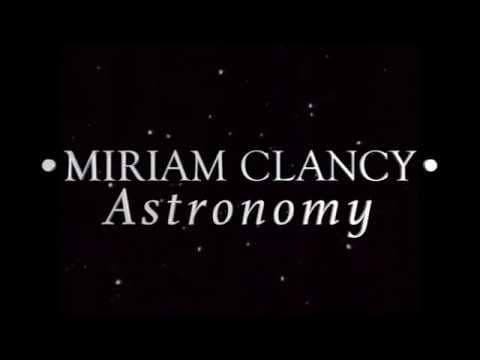Now a resident of rural Pennsylvania, Miriam Clancy hails all the way from New Zealand, home of musical luminaries Lorde, Neil Finn, and Flight of the Conchords (and who could forget OMC’s “How Bizarre”?). Clancy has recently released her new album Astronomy after a long creative and geographical journey.
While developing a musical career, being the recipient of a major music development award and releasing two critically lauded albums in her home country, Clancy set her sights further afield to reach both a wider audience and work with a heavyweight producer. Like many aspiring artists outside North America, this meant looking toward the US and the musical opportunities on offer here. With that in mind, Clancy and her husband/manager JP Winger reached out to several producers she admired, hoping to find an opportunity to work with one of them. This included Mike Ellis (aka Flood) who had worked with New Order, U2, Nine Inch Nails and Depeche Mode. He was keen, but due to a busy schedule he wouldn’t be available for another 12 months. The search continued. Another producer who had caught Clancy’s ear was NYC based Chris Coady, who had worked with TV On the Radio, the Yeah Yeah Yeahs and Beach House. Coady too, like Flood, was in high demand. After jumping through a few hoops to work out logistics and timing, Clancy, with her album demos in hand, boarded a plane to NYC, and as it turned out, it would not be for the last time on this project.
With Coady producing and a tight schedule, sessions for a third of the album were completed at James Iha’s (Smashing Pumpkins) Stratosphere Studios on the Upper West Side before Clancy needed to go back to New Zealand. It would be almost a year before she was able to return to NYC and complete the recordings, this time relocating to Downtown Studios in the East Village with David Tolomei (Dirty Projectors, Future Islands) engineering. Clancy describes the studio as “small but well-loved”, the walls still bearing graffiti by the Strokes from when they had recorded Is This It there. Sadly, like many other Manhattan studios, both of these studios have now closed.
 After completing the recording, Clancy once again returned to New Zealand while Coady started on mixing the album. Shortly after her return, Clancy and her family received the green light to officially relocate to the US, initially landing on the west coast and making their way to New York City. The move seemed to be in tandem with the album being completed, although there was much work to be done before it could be released via her own label, Desert Road Record.
After completing the recording, Clancy once again returned to New Zealand while Coady started on mixing the album. Shortly after her return, Clancy and her family received the green light to officially relocate to the US, initially landing on the west coast and making their way to New York City. The move seemed to be in tandem with the album being completed, although there was much work to be done before it could be released via her own label, Desert Road Record.
Astronomy, as the title suggests, is an expansive, ten-song album of effected guitars, angular drum machines and textured synths, married to Clancy’s mesmerizing vocals. Think Kate Bush fronting Joy Division and you start to get the picture. Aside from vocals, Clancy plays all of the instruments on the album along with a little help from Peter Hale (Here We Go Magic) and Guy Licata (Hercules and Love Affair) on drums, New Zealander Jol Mulholland on bass, and Chris Coady also contributing.
For the production process, Clancy says she wanted to “create exactly what I was hearing in my head,” and carefully constructed demos of the songs before going into the studio. Some of these demos made their way into the final recordings, notably the vintage drum machines, integral to the album’s overall sound. “I felt like I needed to be very strong with what I wanted,
as many a time in recording I would often get railroaded by the guy in the studio. It had happened before to me so much that I rallied, got fierce and over-prepared. I knew, though, after speaking with Chris and brainstorming with him, that he would shape the sonics in a way that I could trust. And he also gave direction and added some instrumentation that was amazing. No railroading there. He just encouraged me to do what I was doing times 100.”
The finished results coming through the speakers confirm this. From the album opener “The Sound” with its meld of ‘80s synth and ‘90s shoegaze, Astronomy swirls and flows with cinematic pop songs equally absorbing for wide, open-sky treks or claustrophobic subway commutes. It’s a stunning album that deserves your attention.
Notwithstanding the travel and time involved in Astronomy’s creation, Clancy and her family also endured a “once in 100 years” flood that swamped her studio and musical equipment at their home on New Zealand’s remote Great Barrier Island. Several of the album’s songs were written on the island and that landscape’s dreamy isolation seeps into Clancy’s music. Luckily, with the help of hardy friends and neighbors, some of the equipment was salvaged, dried out and returned to working use. To this day Clancy is still finding silt from the flood in her guitar pedal Board – a constant reminder of Astronomy’s journey.
Astronomy is available on all streaming services and on CD from miriamclancy.com









